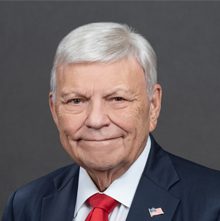Oil Prices Per Barrel Decline to Below $80
The drop is refueled by recession fears as credit conditions in the United States and lemany other economies tighten.

The energy industry ends the first half of 2023 with a pullback in oil prices below $80/barrel, refueled by recession fears as credit conditions in the United States and many other economies tighten, and uncertainty over the pace of demand recovery in China.
As of this writing, WTI crude oil is priced at $68.31/barrel and Brent is at $72.43/barrel.
Rystad Energy Senior Analyst Louise Dickson states: “May is generally a shoulder season that sees subdued demand both from refineries undergoing maintenance and consumers who are waiting until the Northern Hemisphere summer to travel, so weak demand signals now do not necessarily mean weak prices into the high-demand summer season.”
In an extraordinary market update by Rystad Energy Senior Vice President Jorge Leon sent to Rigzone in late April, if fully delivered, the newly announced OPEC+ cuts would further tighten an already fundamentally tight oil market. This would drive Brent toward $100/barrel sooner than previously expected and push the price to around $110/barrel this summer.
ConocoPhillips announced $10 billion in average capital expenditures through 2032, maintaining diversity in its portfolio and balance in production capacity.
In Alaska, ConocoPhillips will drill 65 new wells in existing Coyote and Nuna at a project cost of $1 billion annually. In the Willow project, approved in April by the Biden administration but facing lawsuits, the company plans to spend $7 billion to 7.5 billion by 2028.
Industrial Construction Boom
Federal Reserve Chairman Jerome Powell followed April’s 25 basis point prime rate increase with another 25-point increase in May. Powell states that the Fed would consider a pause in future increases.
However, the Federal Reserve may delay any interest rate reduction predicated on the construction boom the industry is experiencing. While the hikes have hindered borrowing for development and commercial purchases, construction keeps withstanding the heat. Spending and employment in construction have both hit record highs already this year.
Industrial construction accounted for $108 billion last year and was at an annualized rate of more than $140 billion through the first two months of 2023.
However, the construction industry may be poised to shift direction in the near future. Financing for projects may become increasingly hard to come by as rates keep rising and banks tighten standards.
The backlog on construction dropped, based on data available as of this writing, to its lowest level since August of 2022. Whether a construction slowdown could alter the economy, and the Fed’s mindset, remains to be seen.
Semiconductors Lead Industrial Manufacturing
Despite red flags, Industrial Info Resources is tracking $25.7 billion worth of U.S. industrial manufacturing projects that became active in April. The activity is dominated by project starts in the semiconductor/computers sector, totaling approximately $17.6 billion.
Micron Technology’s $15 billion expansion of its Boise (Idaho) Fab 4 Memory and Semiconductors Campus is the largest project by size and investment value. It is followed by Wolfspeed’s $2 billion grassroot semiconductor plant in Siler City, N.C.
This is the first phase of a $4.8 billion investment involving the construction of an approximately 400,000-square-foot semiconductor manufacturing facility. It will increase Micron’s capacity of silicon-carbide semiconductor wafers to support U.S. electric vehicle (EV) production and other applications.
Fort Wayne, Ind.-based Steel Dynamics is one of the largest domestic steel producers and metal recyclers in the United States and is building a multibillion-dollar aluminum flat-roll mill facility in Mississippi.
Site development is near completion, and long-lead, critical production equipment has been placed on order. The massive facilities are being constructed in Lowndes County, one of the few counties where the Tennessee Valley Authority (TVA) provides power.
The aluminum-producing process requires massive amounts of electricity. TVA can supply enough power to run the operation without the construction of new generating facilities. TVA uses nuclear, hydro, coal, wind and solar to generate the required power.
The plant is set to produce 650,000 tons of aluminum annually. Production will be comprised of can sheets (45 percent), automotive (35 percent) and common alloy (20 percent). When fully operational by the first quarter of 2025, it will employ approximately 1,000 full-time workers.
Hyundai Motor Group announced it has made the final investment decision approving the construction of a U.S. electric vehicle (EV) battery production in a joint venture with a subsidiary of South Korean SK Innovation Co.
The project entails the construction of a $5 billion lithium-ion battery manufacturing plant in Barstow, Ga.
In addition, Hyundai’s 50/50 joint venture with SK includes the new plant in Cartersville, Ga., that is planned to produce 35 gigawatt-hours of battery cells per year, enough to accommodate 300,000 EVs.
Hyundai has another project where construction is underway on a $5.5 billion EV and battery assembly plant in Bryan County, Ga.
The escalating aggressive posture of China regarding Taiwan, and possible confrontation with the United States, is giving the industry considerable concern over supply chain disruptions and the availability of offshore PVF materials. Valve suppliers and assemblers are particularly a risk.
The Trans-Pacific region is extremely vulnerable to major disruptions, including shipments of PVF products from Australia, Brunei, Chile, Japan, Malaysia, Singapore, Thailand, Vietnam and China.
Finally, pricing for commodity butt-weld carbon steel fittings and forged-steel flanges have remained stable over the past months and should remain so, barring any unforeseen disruption in the supply chain or raw material increases.
PVF Roundtable News
The PVF industry desperately needs qualified, skilled workers to populate our workforce to ensure timely delivery of strategic projects. The PVF Roundtable is working diligently to support the education and training of young prospects to fill the gaps created by retiring workers.
The Weldbend Corp. and Ferguson Industrial, key sponsors for the annual PVF Roundtable Golf Tournament, are pleased to report a total sellout of all courses at the Clubs of Kingwood and Deerwood in Kingwood, Texas — Island, Marsh, Lake, Forest and Deerwood — along with record-setting turnout and record-setting fundraising for the May 8 event.
The tournament is the PVF Roundtable Charitable Foundation’s premier fundraising event.
The next networking meeting of the PVF Roundtable will be held Aug. 8, 2023, 4-7:30 p.m. CDT at The Bell Tower on 34th in Houston.
This year, The PVF Roundtable will exceed $2 million in total scholarships that have been distributed by the PVF Roundtable Charitable Foundation since its inception to universities and trade schools for the development of a skilled labor force to meet the increasing demands of the PVF industry.
Distributions for the first half of 2023 will be announced at the August meeting.
The golf tournament, the TroutBlast and the Weldbend-sponsored PVF Roundtable dinner in October 2022 were the major fundraising events held by the foundation during 2022, with the funds raised dedicated to the PVF Roundtable Scholarship Programs.
The PVF Roundtable Golf Tournament and TroutBlast are the major fundraising events scheduled for 2023. The Weldbend Corp., Ferguson Industrial and MRC Global are key sponsors of these events.
As a member of the board, and I speak for all members, we thank you for your participation in these events.
With the uncertainties in the current turbulent PVF market, the networking meetings are a unique venue for you and your associates to network with your PVF peers. These events provide the platform to share information, discuss pertinent issues, meet new contacts, develop long-lasting friendships and pursue new opportunities in the industry.





